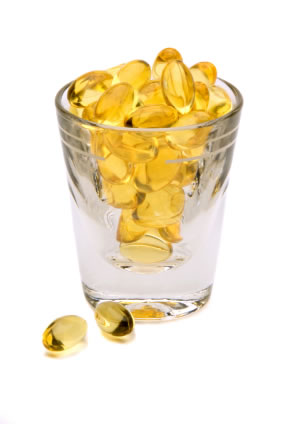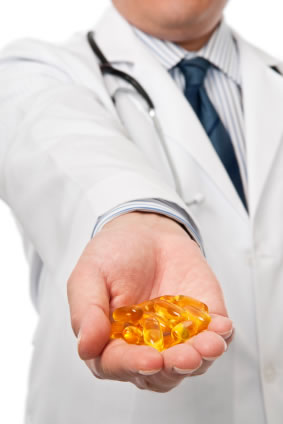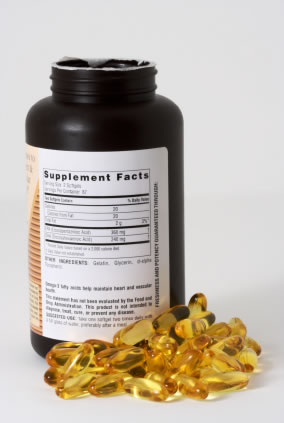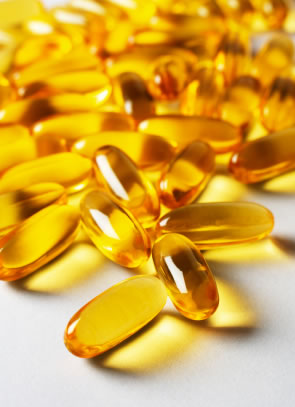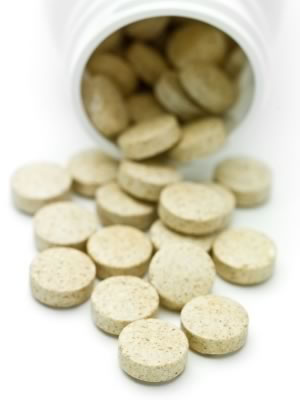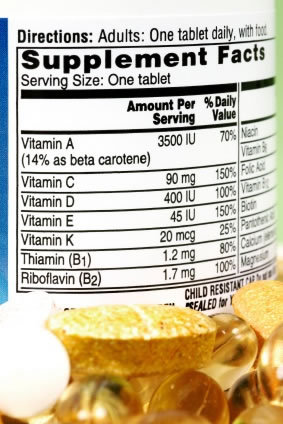Overview
Tocofersolan is a synthetic form of vitamin E that is also water soluble. Natural forms of Vitamin E are fat soluble instead of water soluble. Chemically, tocofersolan, is a polyethylene glycol. The product is derived from an alpha-tocopehrol. The synthetic form of vitamin E, Tocofersolan, is available for people who cannot absorb fats as result of a particular disease. Some of these diseases include cholestatic liver and short bowel syndrome. Individuals who possess a healthy, normal diet typically do not need a vitamin E supplement. However, in some instances the supplement is necessary.
This form of vitamin E supplement was introduced in July of 2009 under the name, Vedrop. The 50 milligram per milliliter solution was introduced to alleviate vitamin E deficiency in infants who suffer from malabsorption. Alternatively, it was also for patients suffering from congenital or chronic cholestasis. Most of these conditions originate from birth. Some conditions begin in adolescence when the teenager is between 16 and 18 years old. Age groups may vary depending upon the region.
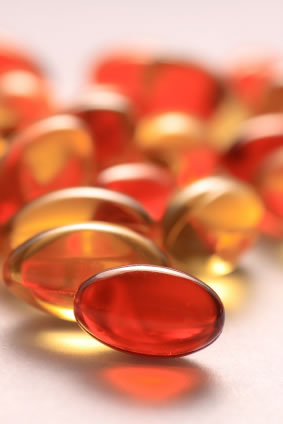
When physicians refer to vitamin E, they are describing a family of eight antioxidants. There are four tocopherols and four tocotrienols that comprise the family. Each of the groups contains an alpha, beta, gamma, and delta version of the antioxidant. Alpha-tocopherol is the most common form of vitamin E found in the body and thus, is the most widely researched discussed. When smoke or pollutants enter the body and form free radicals, alpha-tocopherals are the primary antioxidant that intercepts the free radicals to avoid damage in the body.
Problems in Nervous System
Vitamin E deficiencies can cause problems in the nervous system. These problems manifests as numbness, loss of balance, and tingling. Vitamin E is an antioxidant that protects the body’s cells from damage. Because tocofersolan is an antioxidant, this water soluble version of vitamin E is often found in cosmetics or pharmaceuticals.
Alpha-tocopherol protects the cellular membrane from oxidation. The antioxidant accomplishes this goal through a “lipid peroxidation chain reaction.” This process removes damaging free radicals and prevents further oxidation that may damage the cells. After this process is complete, antioxidants, retinol, ascorbate, or ubiquinol, may transform the alpha-tocopheroxyl radicals back into their oxidized state.
Scientists have not proven why vitamin E is vitally important in a person’s diets. Some speculate that its importance is related to its healing antioxidant properties. Some research also suggests that vitamin E functions as a signaling molecule as opposed to playing a role in antioxidant metabolism. However, this has not been proven conclusively.
Different Forms
Vitamin E comes in several different forms. Each form has the same basic function with a few unique qualities. Gamma-tocopherol is an example of a nucleophile that interacts with “electrophilic mutagens” in the body. Most research conducted is related to alpha-tocopherols. Much of the research relates to the heart disease and the efficacy of vitamin E in preventing heart disease. The studies are not conclusive.
According to a 2007 study, none of the research could conclusively prove the effects of vitamin E. Additionally, tocopherols are studied more than tocotrienols in relation to vitamin E. Although, this is one of the lesser known versions of vitamin E, more research is being conducted in order to prove the efficacy of this form in the daily diet.
Experts are suggesting however, that the main role of tocotrienols is to protect the neurons from damage and to reduce cholesterol. This version of vitamin E is also thought to protect against strokes and brain damage that is associated with strokes. More studies must be conducted to prove these findings conclusively.
Recommended Daily Allowances (RDA)
Physicians instruct individuals to take no more than 400 units of vitamin E per day to avoid unpleasant side effects. The Recommended Daily Allowances are determined by Dietary Reference Intakes (DRIs) and the Food and Nutrition Board (FNB). The Recommended Daily Allowances provided below refer to alpha-tocopherol and not to gamma and delta-tocopherol. For reference purposes: 1 milligram of alpha-tocopherol is equal to 2.22 IU and 1 IU of alpha-tocopherol is equal to 0.45 milligrams of the synthetic form of vitamin E. The Recommended Daily Allowances are listed below:
Birth to 6 months
Males and Females: 4 mg or 6 IU
7 to 12 months
Males and Females: 5 mg or 7.5 IU
1 to 3 years
Males and Females: 6 mg or 9 IU
4 to 8 years
Males and Females: 7 mg or 10.4 IU
9 to 13 years
Males and Females: 11 mg or 16.4 IU
14 years and older
Males and Females: 15 mg and 22.4 IU
Pregnant Females: 15 mg and 22.4 IU
Lactation: 19 mg and 28.4 IU
Take vitamin E as instructed by your physician or as instructed on the label. Most forms of vitamin E are ingested orally. However, there are topical forms of vitamin E as well. If your experience tingling or numbing in the feet, then you may have a serious medical problem and you should seek the advisement of a physician.
Sources of Tocofersolan
Although, tocofersolan refers to water soluble synthetic forms of vitamin E, food sources that contain vitamin E sources are listed below for the sake of knowledge. The foods listed below have very high levels of vitamin E:
- Asparagus
- Avocado
- Egg
- Milk
- Nuts (Almonds, Hazelnuts)
- Seeds
- Spinach
- Wheat Germ
- Whole Grain Foods
- Unheated Vegetable Oils
Other sources include:
- Sunflower seeds: 1 ounce contains 7.4 mg of vitamin E which equates to 40 percent of the Daily Value (DV) of vitamin E.
- Wheat germ oil: 1 tablespoon contains 20.3 mg of vitamin E which equates to 100 percent of the Daily Value (DV) of vitamin E.
- Sunflower oil: 1 ounce contains 6 mg of vitamin E which equates to 30 percent of the Daily Value (DV) of vitamin E.
- Safflower oil: 1 tablespoon contains 4.6 mg of vitamin E which equates to 25 percent of the Daily Value (DV) of vitamin E.
- Hazelnuts: 1 ounce contains 4.3 mg of vitamin E which equates to 22 percent of the Daily Value (DV) of vitamin E.
- Peanut Butter: 2 tablespoons contains 2.9 mg of vitamin E which equates to 15 percent of the Daily Value (DV) of vitamin E.
- Spinach: 0.5 cup contains 1.9 mg of vitamin E which equates to 10 percent of the Daily Value (DV) of vitamin E.
- Broccoli: 0.5 ounce contains 1.2 mg of vitamin E which equates to 6 percent of the Daily Value (DV) of vitamin E.
- Kiwi: 1 medium kiwi contains 1.1 mg of vitamin E which equates to 6 percent of the Daily Value (DV) of vitamin E.
- Tomato: 1 medium contains 0.8 mg of vitamin E which equates to 4 percent of the Daily Value (DV) of vitamin E.
- Mango: 0.5 cup contains 0.9 mg of vitamin E which equates to 5 percent of the Daily Value (DV) of vitamin E.
Health Benefits
Vitamin E may prove to be effective in treating or preventing any of the following health conditions:
- Cystic Fibrosis
- Thalassemia
- Sickle Cell Anemia
- Disease of the Retina of the Eye in Premature Infants
- Blockage of Normal Bile Flow
- Hemorrhage into a Part of the Brain of a Newborn Infant
- Abnormal Development of Bronchopulmonary Tissue in Newborn
- Anemia in Low Birthweight Infants
- Abetalipoproteinemia
Other studies have shown that selenium taken with vitamin E may reduce the risk of prostate cancer. Experts speculate that the disease may be reduced by as much as 30 percent. Other studies have shown that Vitamin E did not prevent prostate cancer. Thirty-five thousand men participated in the study. The studies are inconclusive and further research must be conducted to prove these findings.
Ailments from Vitamin E (tocofersolan) Deficiencies
Vitamin E deficiencies are rare. Symptoms rarely manifest in people who have not obtained vitamin E from their diets. Premature infants may suffer from a deficiency in vitamin E. These deficiencies may promote infections of the retina and other parts of the body.
Those individuals who possess absorption problems related to fat are more likely to develop a deficiency in vitamin E than those who can absorb fat through food. People who possess fat-malabsorption problems have difficulties because the digestive tract requires fat to absorb natural fat-soluble vitamin E. Tocofersolan was developed in order aid people with fat absorption disorders. Tocofersolan should be used in the same manner that vitamin E would be used in the body.
People who have symptoms of deficiency may experience:
- Peripheral neuropathy
- Ataxia
- Skeletal Myopathy
- Retinopathy
- Immune Response Impairment
Crohn’s disease, Cystic fibrosis, and other Liver Conditions
People with Crohn’s disease, cystic fibrosis, or who have problems with their livers secreting bile may require a water soluble form of vitamin E, tocofersolan. People with bile problems may experience chronic diarrhea or stools that contain grease.
Abetalipoproteinemia
People with abetalipoproteinemia also have a problem absorbing fat from natural foods. These individuals may also require a water soluble supplement. Most of these patients require as much as 100 mg per day of this substance. This rare disorder is a result of a genetic inheritance and cannot be prevented. Abetalipoproteinemia causes muscle weakness, poor nerve impulse transmissions, and retinal degradation. In some instances, the retinal degradation may lead to blindness.

Ataxia
Ataxia is another rare disorder that is the result of a defective gene. This particular disorder is a result of the absence of the transfer protein, alpha-tocopherol. People with this disease lose their ability to walk or develop nerve damage.
Negative effects of Vitamin E
Congenital heart defects
Some studies have found that vitamin E was recommended for pregnant mothers. However, one study conducted in the Netherlands suggested that high quantities of vitamin E supplements during pregnancy may contribute to congenital heart defects. The National Health Service in the United Kingdom suggests that pregnant women should not take supplemental vitamin E tablets. More studies should be conducted in order to determine the efficacy of this particular supplement.
Vitamin E, strokes and heart attacks
While studies have shown in that vitamin E may have some benefits for stroke victims, new studies indicate that vitamin E supplements may actually increase the risk of a stroke. A Finnish group of scientists found this to be true in their particular study. The study was published by The Alpha-Tocopherol Beta-Carotene Cancer Prevention Study Group. In a 2005 study conducted by the Journal of American Medical Association, vitamin E supplements were shown to increase the risk of heart failure. Nearly 7000 people participated in this particular trial. The findings are inconclusive and more studies should be conducted to prove this conclusively.
Another study published in the Stroke Journal in 2005 showed that tocotrienol administered to hypertensive rats did protect against strokes. This form of vitamin E was administered orally to the rats. The supplement also showed improvements in neurodegeneration. Tocopherols were also studied. However, this particular form of vitamin E was only found effective at higher concentrates.
Additional Study Conclusions
Other studies conducted by Wayne State University and Ohio State University Medical Center showed that tocotrienol offered health benefits to various organs in the body. Previous studies concluded that tocotrienols did not travel effectively as a synthetic supplement in the blood stream. This is because the transfer protein is less attracted to tocotrienols than tocopherols. This study was also conducted in 2005. People with fat malabsorption problems will be more likely to benefit from tocofersolan, which is water based. However, this synthetic form focuses primarily on the alpha-tocopherol aspect of vitamin E.
By contrast, in a small study of men who had previously undergone coronary artery bypass surgery, the studies found that these men saw a reduction in the instances of atherosclerosis. Physicians measured this by using an angiography. These men consumed 100 IU per day of alpha-tocopherol to achieve these results. While the vitamin did alleviate some of the symptoms associated with heart disease, vitamin E alone did not reduce the number of total deaths from heart disease. However, the vitamin did reduce the number of non-fatal heart attacks by 77 percent. This trial took place in Great Britain.
Vitamin E and Cancer
Studies are being conducted to prove the efficacy of vitamin E in various types of cancers. Experts speculate that many cancers result from damage caused by free radicals. Vitamin E is an antioxidant that assists in the protection against cancer causing free radicals. Nitrosamines are also known carcinogens that are formed in the stomach. Vitamin E may also fight or block these carcinogens. Trials, associated with vitamin E and cancer, have not provided any conclusive results to positively and concretely solidify these results. Most of the studies involved human subjects.
Breast cancer studies have also been conducted. One such study involved over 83,000 women to study the effects of vitamin E for 14 years. This study showed that vitamin E reduced the chance of breast cancer by 43 percent in those patients who consumed the highest amount of vitamin E. Women with the family history of breast cancer enjoyed the greatest benefits. Women with no family history only experienced a 16 percent reduction in the risk for breast cancer.
Tocotrienols have been cited in research studies as possessing cancer eliminating effects. Most of these studies were conducted in conjunction with breast cancer. University of Louisiana at Monroe demonstrated that statins and tocotrienols were effective in treating breast cancer in women. This form of vitamin E killed cancer cells while avoiding myotoxicity. Gamma-tocotrienol has been proven to be most effective in killing cancer cells. This phenomenon of killing cancer cells was not only proven effective in breast cancer, but also prostate cancer and other melanomas.
Peyronie’s Disease
Some urologists may prescribe vitamin E for Peyronie’s disease. This disease describes the treatment for males who possess abnormal curvature in their penises due to inflammation. While the studies are not conclusive, scientists are constantly researching to determine the benefits of vitamin in this disease.
Neuromuscular Problems
Vitamin E deficiencies have been known to contribute to neurological problems. Some of the neuromuscular problems include spincerbellar ataxia and myopathies. Anemia may also result from vitamin E deficiencies due to red blood cell damage caused by oxidation.
Cognitive Decline
Excessive exposure of nerves to free radicals may result in damage over time. This damage may contribute to memory loss and other neurodegenerative diseases. Alzheimer’s disease is one such disease that may evolve as a result of free radical damage.
Experts suggest that consumption of a vitamin E supplement, such as tocofersolan may provide protection against the disease. Research studies involving over 300 Alzheimer’s patients found less deterioration over time. Each patient was administered 2000 IU per day. Less of these patients needed institutionalizing due to memory problems. However, these patients did experience more falls due to balance problems.
Another study involved patients between 65 and 102 year of age who were given vitamin E. Over a 3 year time period, these patients experienced less cognitive decline than similar patients who were not receiving vitamin E. Some groups did not show any improvements after being administered 2000 IU per day. Therefore, more studies should be conducted to determine the efficacy of vitamin E supplements in patients who may be healthy or suffering from Alzheimer’s disease.
Precautions when Taking Tocofersolan
Before beginning a tocofersolan regimen, consult with a physician. Inform the physician of all known allergies and other health problems. The physician will recommend a dosage to meet the patient’s particular needs. Patients who are suffering from the following conditions should exercise extra caution before starting a vitamin E regimen:
- Blood Clotting/Bleeding Problems
- Stomach Ulcers
- Hemophilia
- Low Platelets
- Stroke
- Liver Disease
Patients, who may undergo surgery, should consult with the surgeon prior to the procedure. The doctor may recommend that patients cease their vitamin E regimen until the surgery is complete. Also, discuss any potential risks of consuming vitamin E during pregnancy with your physician. This will avoid any unpredictable side effects that may be associated.
Drug Interactions
Before beginning a vitamin E regimen, inform the physician of any medications you are taking. The physician will make informed recommendations regarding dosage and other interactions that may occur. Some common drug interactions may include the following:
- Amprenavir
- Antiplatet Drugs, such as aspirin, clopidogrel, and ticlopidine
- Blood Thinners, such as warfarin
- Herbal Products, such as garlic or gingko
- Cyclosporine
- Fat-soluble supplements, such as vitamin A, vitamin D, vitamin E, vitamin K, and coenzyme Q
- Iron supplements
- Selenium
- Vitamin C
- Beta-Carotene
The list of all possible interactions is not exhaustive. Keep both the physician and pharmacist informed of each medication to avoid unpleasant side effects. Make note of other products containing vitamin E. This will aid in avoiding over consumption of vitamin E and causing adverse effects.
Vitamin E may also interact with Simvastin or Zocor and Niacin. The two used in conjunction with one another appear to lower high density lipoproteint (HDL) cholesterol levels. Oncologists cite risks of using any antioxidant supplement, including vitamin E, tocofersolan, with chemotherapy or radiotherapy. Oncologists suspect that the antioxidant may decrease the effectiveness of the treatment. The effectiveness may be lowered if the cellular oxidative damage is inhibited in cancer cells. Further studies are being conducted to evaluate the benefits of vitamin E supplements in cancer therapy.
Allergies and Side Effects
Individuals who consume vitamin E in the recommended doses typically do not experience side effects. Those who take vitamin E in high doses over a long period of time may begin to experience side effects. A large dose would consist of a dose over 400 units per day. Side effects may include the following:
- Nausea
- Diarrhea
- Stomach Cramps
- Tiredness
- Blurred Vision
- Headache
- Rash
- Itching
- Swelling of face, tongue or throat
- Dizziness
- Wheezing
- Trouble Breathing
Miscellaneous
Individuals who miss a dose of vitamin E should take the dose on the next scheduled time. Store vitamin E in an airtight container. Keep the product away from heat, light, and moisture. To dispose of the product do not flush the product down the drain. Inquire to find out the proper disposal of the product.

